What does it mean to be a good Sound Designer? Does it mean being able to find interesting sounds and simply record them? Maybe. Sometimes if we come across these sounds in a fleeting moment, we are forced to record them with whatever means we have at the time. And hey, a poorly recorded sound is better than a not-recorded sound. But more often than not, the highly crafted sounds that we are creating are made possible by a carefully controlled set of tools.
I will be the first person to admit that I’m not the biggest gearhead you’ve ever met. For the longest time, I relied on the few plugins that I knew how to use well. Also, real hardware was really out of the budget for me. But then I got a full-time offer and was asked to work with the companies’ set of hardware tools. And through this job, was sometimes sent to studios to record voice over or foley, where I was presented with even more tools. I quickly realized that there was a large knowledge gap that I needed to fill.
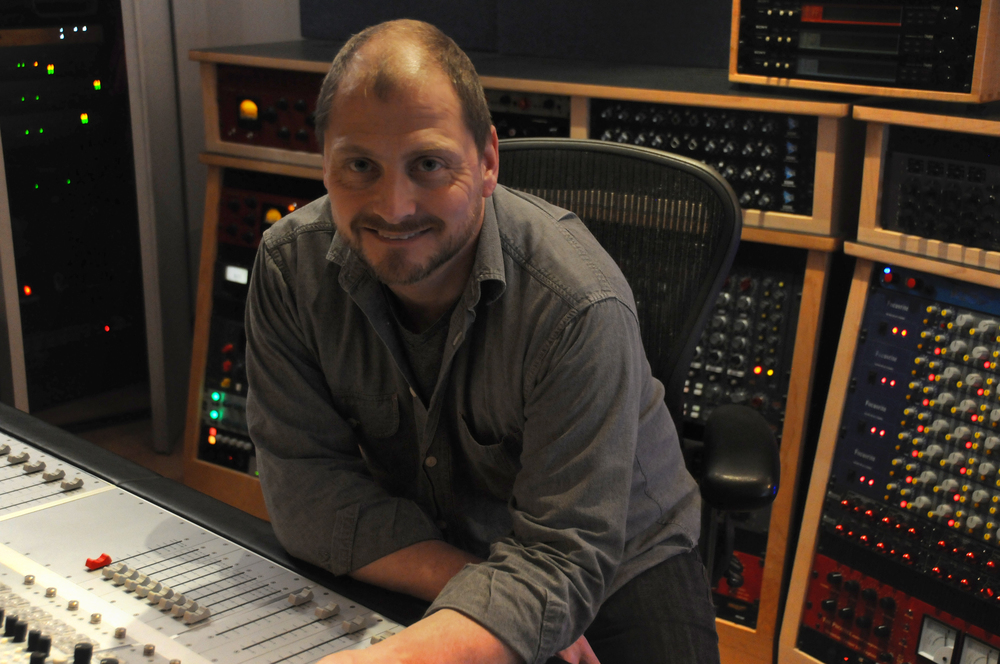
When I think about people who’ve dedicated their careers to understanding the nuances of hardware and how it affects sound, my first thought goes to recording engineers. So, when I wanted to learn more about hardware and how it affects my sound design, I reached out to a local music studio.
Sean Beresford is a recording engineer who currently works out of Studio Discrete in San Francisco, California. Known as Hyde Street Studio from about 1980, and Wally Heider Recording before that, Studio Discrete is a few incredibly talented individuals that have grouped together under the leadership of Tom Richardson to create a unique and highly creative recording atmosphere. Sean has been in the music industry for over two decades and knows how to capture the best possible sound in the right space with the right hardware. And luckily for me, Sean was able to show me his setup at Studio Discrete.
“The history of this studio came out of Tom Richardson being one of the founding partners in a company called Cutting Edge Audio Group, a high-end audio reseller in San Francisco. He had accumulated a lot of really great gear over the years. Finally, it outgrew the basement studio at his house and he decided to build a commercial studio in the city.”
So, let’s talks hardware…
The Microphones
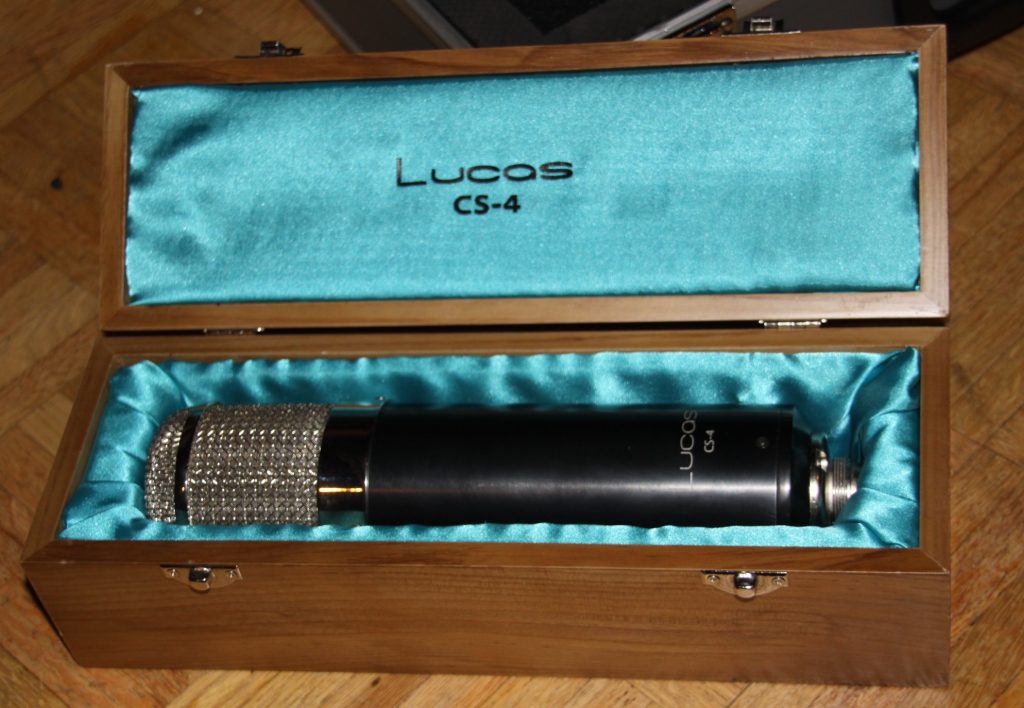
“We’ve come across a few companies that we love and that we feel are making really good modern day microphones. There’s a company called Lucas Microphones, for instance, that we particularly like (left). They are a little hard to get, I think there is something like a year waiting list to get one. It’s a modern replica of a Neumann U47 tube microphone. The U47, which was the first developed in the late-40s/early-50s is famous as the mic that artists like Frank Sinatra and the Beatles sang through. Later variations included the U67, introduced in 1960 and the U87 (solid state) introduced in 1967.”

“This is an original U67 (right). It’s from the early to mid-1960s. We also have a pair of Neumann U89’s which were a variant of the U87 made in 1990, offering more polar patterns. The Lucas CS-4, Neumann U67 and Neumann U89’s plus a pair of RCA BK11 ribbons from around 1967 make up our collection of vintage mics. Some of these mics are tube microphones and require a separate power supply to run them. There are six pins (or more) in the cables because it is carrying power for the tube as well as the audio signal.”
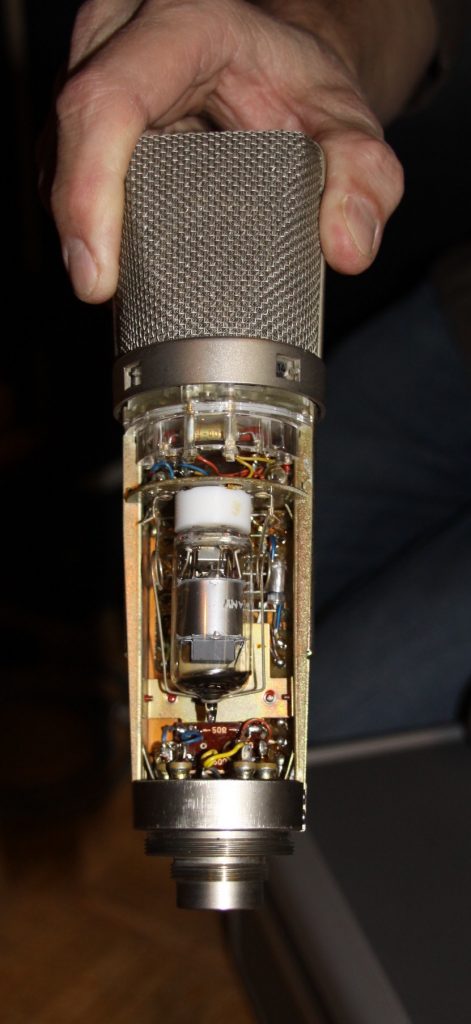
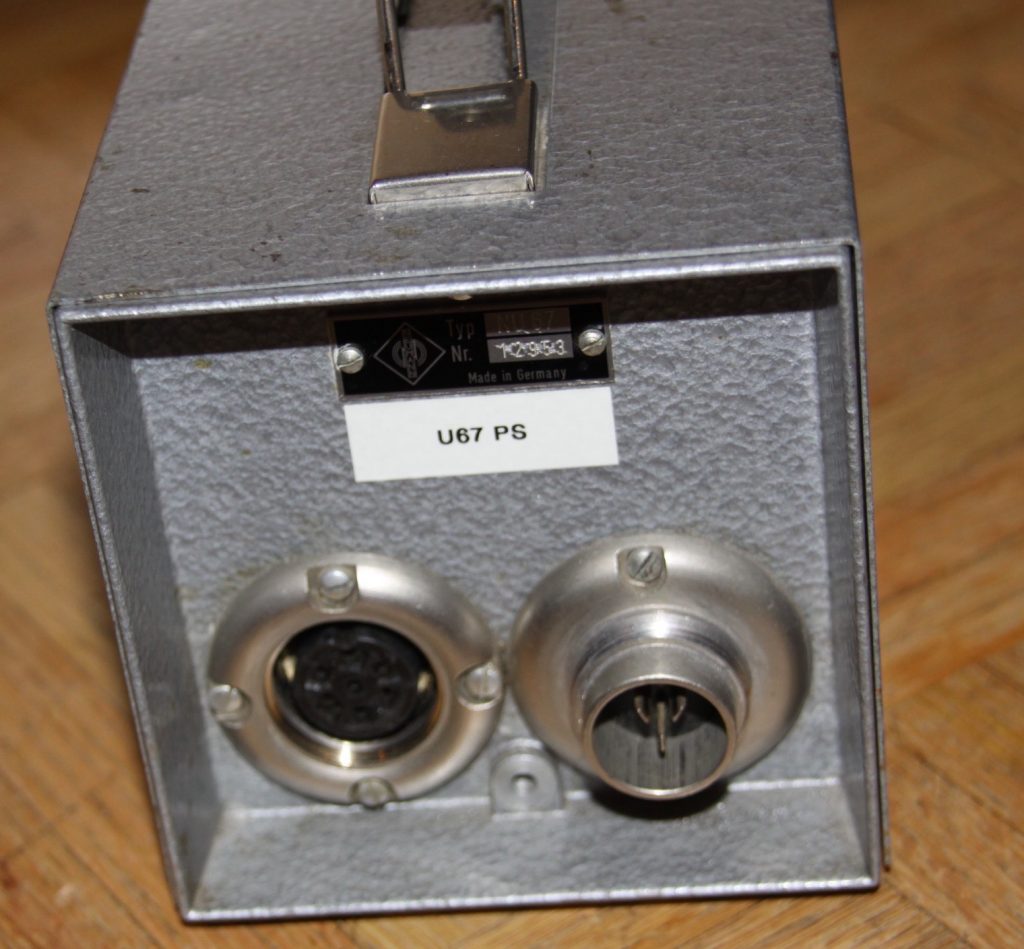

“We are also a big fan of Manley recording equipment. This microphone is called the Manley Gold Reference Microphone (left). It’s one of those microphones that is incredibly true to the source you are recording. It doesn’t sugar coat anything. If something sounds bad… it sounds bad! But on a good source, it sounds like no other mic. This is also a tube mic so it still has to carry power, but the power supply is significantly smaller the supplies on some of the earlier German versions. It’s for those times when you’ve just got a great sounding instrument in a great sounding room, and you don’t need to glorify it in any way. It’s a perfectly accurate representation of what you’re hearing.”
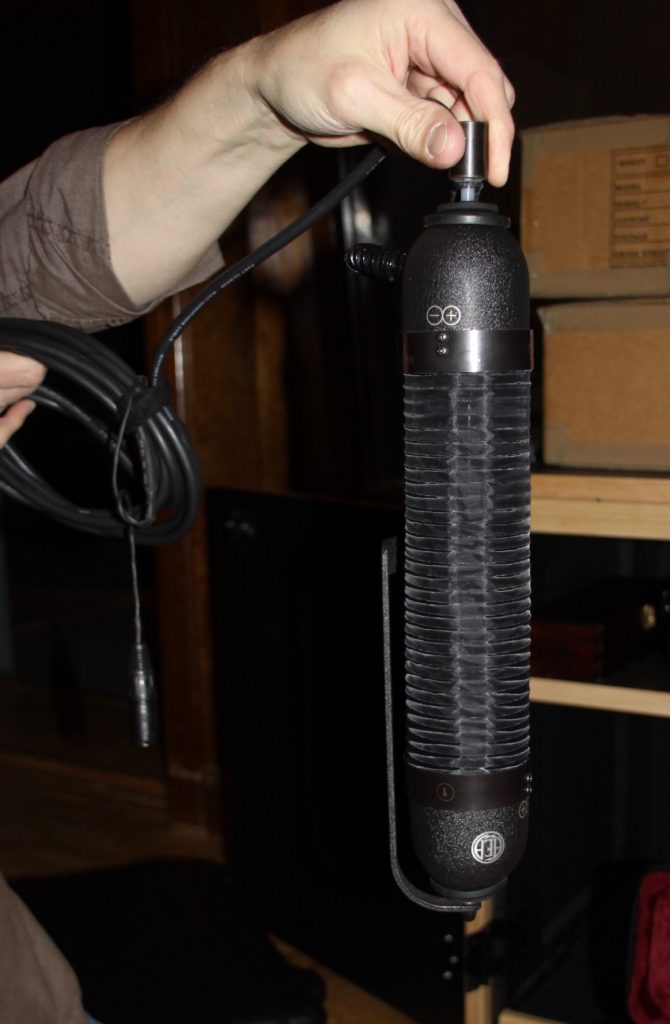
“This is the AEA R88 (right), a stereo ribbon mic made by Wes Dooley’s company AEA. They make fantastic modern day but vintage inspired ribbon mics. Inside there are two ribbons at 90 degrees to each other. Because of the figure-eight nature of the ribbons, the two together form a Blumlein microphone which is often used in classical recordings. If you simply put this in the middle of a great sounding room with a great instrument it’s just ridiculous.”
The Equalizers
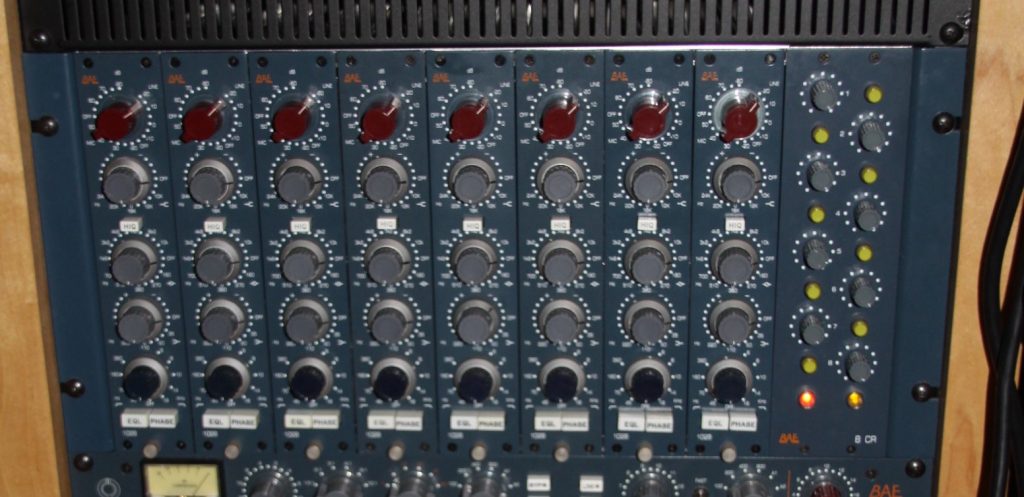
“For our microphone preamps, amongst others, we have this rack of eight BAE (British Audio Engineering) ‘Neve style’ preamps (left). They’re basically exact replicas of Neve Class A preamps from the early 1970’s, similar in essence to the famed Neve 1073 but with more frequencies on the high band and mid band than the 1073 had. These preamp/eq’s have that thick, fat sound Neves are so famed for.”
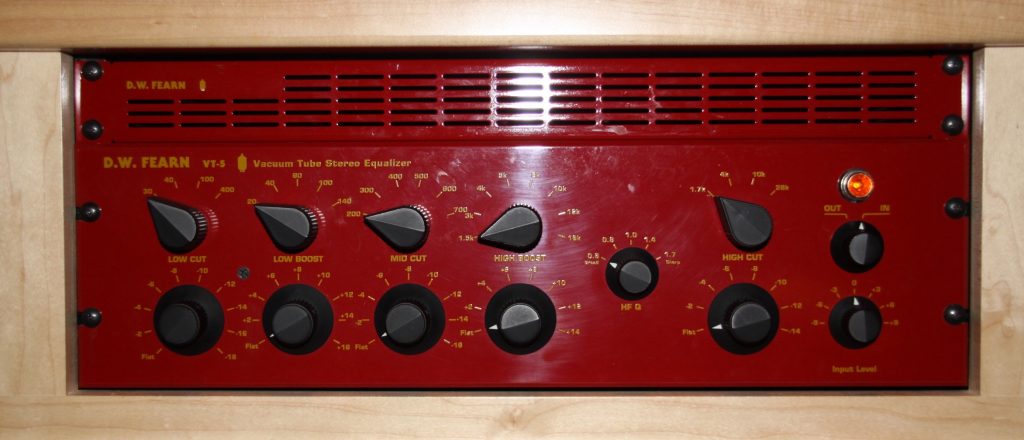
“In contrast to the vintage Neve style sound, we have this D. W. Fearn VT2 stereo tube preamp (right), It is inspired by classic tube designs of the 60’s, but isn’t trying to emulate anything specifically. In addition, because of the use of modern components unavailable during the ‘vacuum tube era,’ it has a level of performance that would not have been possible back then. Sonically, it sounds completely different than something like the BAE 1028’s. It’s pristine, beautiful, and lifelike, but adds less of a ‘sonic imprint,’ or coloration, than something like the Neves does.”
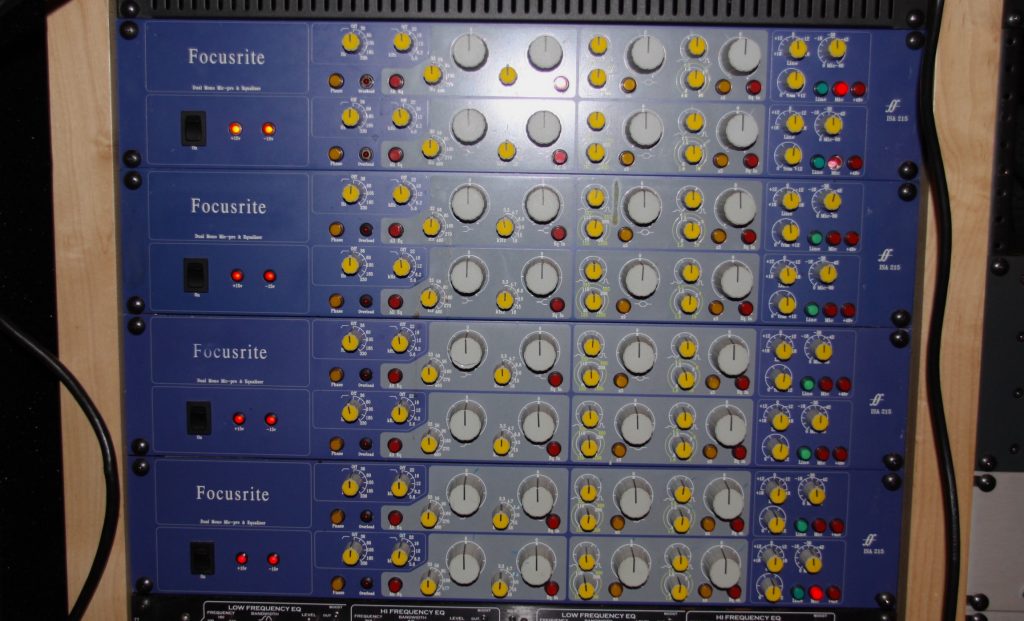
“Another preamp/eq that all of us at Discrete personally love was from a company Rupert Neve was involved in during the late 80’s called Focusrite. Today, Focusrite is more widely known for making great sounding audio interfaces for your DAW. But back in the 80’s, they were famous for making some of the best preamps and compressors available, and for making one of the most iconic large-format recording consoles ever built, the Focusrite ISA (only 13 were ever made). These ISA 215 mic preamps/eq’s, the same as what were in those consoles (top), are very much sought after pieces that have a unique sound to them.”
“We are also big fans of anything that Dave Hill from Crane Song / Dave Hill Designs comes out with. They have an amazing mic preamp called the Europa (not pictured), which is a modern mic preamp that has some great features like odd and even harmonic distortion. This has become my favorite preamp for recording vocals because you can get a little bit of grit on the front end before going to your converters.”
“Another favorite is the Chandler stuff. The TG2’s (below) are incredibly thick, fat sounding preamps. These are actually really killer for ribbon mics too. I like to put the Coles 4038’s or the AEA R88 through these.”
“Our two favorite stereo EQ’s, I would have to say, are the Manley Massive Passive and the Chandler Curve Bender. Wade Goeke from Chandler has a deal with EMI Abbey Road in the UK to make replicas of the original equipment EMI were designing ‘in-house’ for their own studios in the 1960’s. The Curve Bender stereo eq is famously known as the Pink Floyd “Dark Side Of The Moon” EQ. Neither of these equalizers has to be used on the stereo bus, or in mastering (as was originally intended for the vintage Curve Bender), as they are equally great on individual instruments such as acoustic guitars, pianos, drums etc. They have been my go-to stereo bus EQ’s for some time.”

“Desmond Shea, one of the studio partners, is a collector of weird and wonderful oddball vintage equipment. He has this crusty old Telefunken V72 clone (not pictured). Telefunken, a German company from the 1960’s, made microphone preamps as well as mics back in the day (they still make fantastic mics today in the USA). Their most famous preamp probably was the V72. It’s an old tube preamp with giant transformers that weighs a ton. EMI used the V72-S preamp in their famous REDD 37 console (think The Beatles Sgt. Pepper for example).”

“Before we move onto the compressors, I should mention that one of the primary considerations when Tom Richardson first envisaged Studio Discrete (and earlier at ‘Mix One’ at the old Coast Recording Studio on Mission street), was that because he already had a pretty huge amount of great analog outboard gear, he felt that we didn’t need to go the traditional route of having a large format analog recording console that had ‘built-in’ mic preamps, EQ’s compressors etc. His philosophy was that we should have a console that had ‘no preamps, EQ’s or compressors’ in it and instead should have this wide ‘palette’ of sounds available from outboard gear from all of the manufacturers making great equipment today. That way, it could be patched into the console on a channel by channel basis.”
“To this end, we decided on getting the Rupert Neve Designs 5088 analog console (right). It is what the Rupert Neve and his company are designing now, almost 50 years on from his famed original designs of the early 70’s that are still so revered today. The 5088 is just a fantastic sounding console. It is simple and intuitive and has a very pure, pristine signal path. The design of the console is very simple by today’s standards in that is has 36 channels of line inputs which can route to any one of just eight busses and with eight aux sends. This design means your signal doesn’t go through a huge amount of unnecessary electronics in the case where you want the most direct path. The console is truly phenomenal sounding, but at the same time does add a touch of its own sonic signature in the most beautiful way.”
The Compressors

“One of our favorite limiter/compressors is the Vac Rack TSL-4 by Inward Connections (right). This has a throwback style feel to it, similar in some ways to the UREI LA-2 style compressor of the late 60’s. This thing is surprisingly transparent even when compressing a signal very hard.”

“As I said before, we’re big fans of Manley recording equipment. Everything they make is awesome. I also like the fact that EveAnna Manley is a woman making some of the best high-end audio equipment available today in a largely male dominated field! We’ve got three pieces of hers, the Stereo Variable Mu (top), a great stereo bus compressor, the ELOP (not pictured) and then also the Massive Passive EQ as I mentioned before (not pictured).”
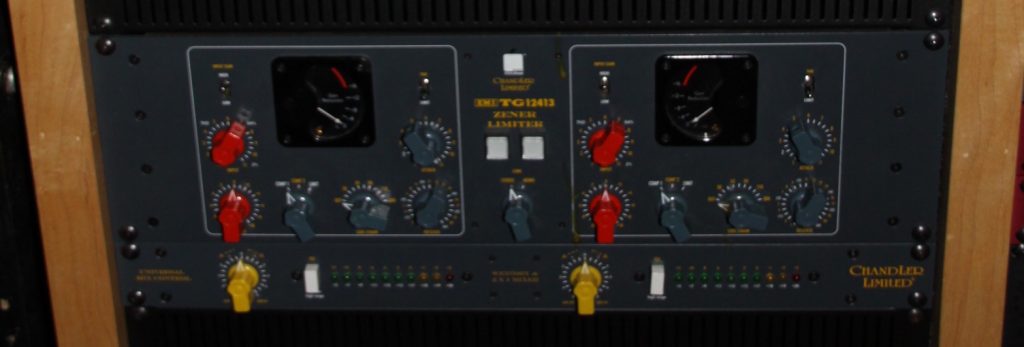
“This is one of my personal favorite compressors, the Chandler Zener Limiter (right). As I had mentioned before, Chandler is making EMI Abbey Road endorsed equipment very similar to the originals. As most recording engineers know, the EMI stuff from the 60’s is totally unique and has character and a sound that nothing else does. I love to patch this compressor into my drum room mics and compress the hell out of them. It makes the room sound about 10 times as large as it really is!”
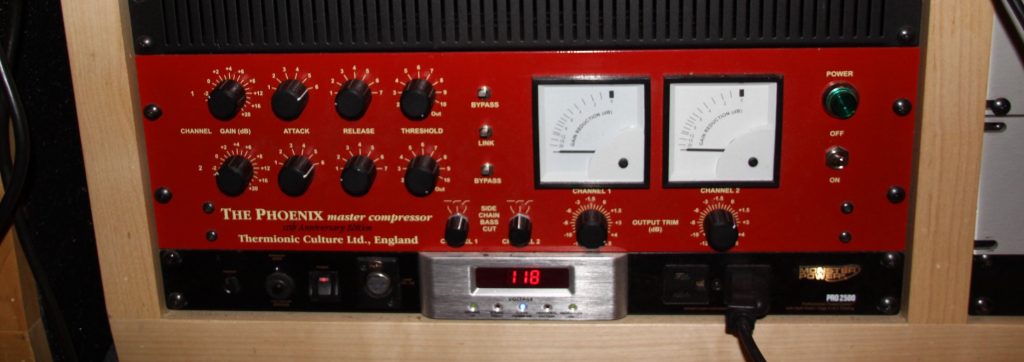
“Thermionic Culture is another company from the UK making fantastic tube equipment like mic preamps, EQ’s and compressors. They make this stereo compressor we love called the Phoenix (top). Again, it draws its inspiration from older designs of yesteryear. Vic Keary, the guy behind Thermionic, is a guy similar in ways to Rupert Neve in that he was designing and building equipment back in the 60’s when it was not ‘vintage;’ it was brand new! They also make this great box (not pictured), called the Culture Vulture. It’s a 2 channel tube distortion box, which can add subtle tube warmth to insane over-the-top distortion. It’s great for distorting vocals and other things.”

“Following along are the BAE 10 DC’s (left). These are from the same company that makes the BAE 1028 Neve style mic preamp/eq’s I mentioned earlier. The 10DC’s are modeled after the Neve 2254 compressors that you might find in an old Neve 80’s series console from the 70’s. Again, they have a unique tone to them like no other piece of gear.”
Reverb & Delay
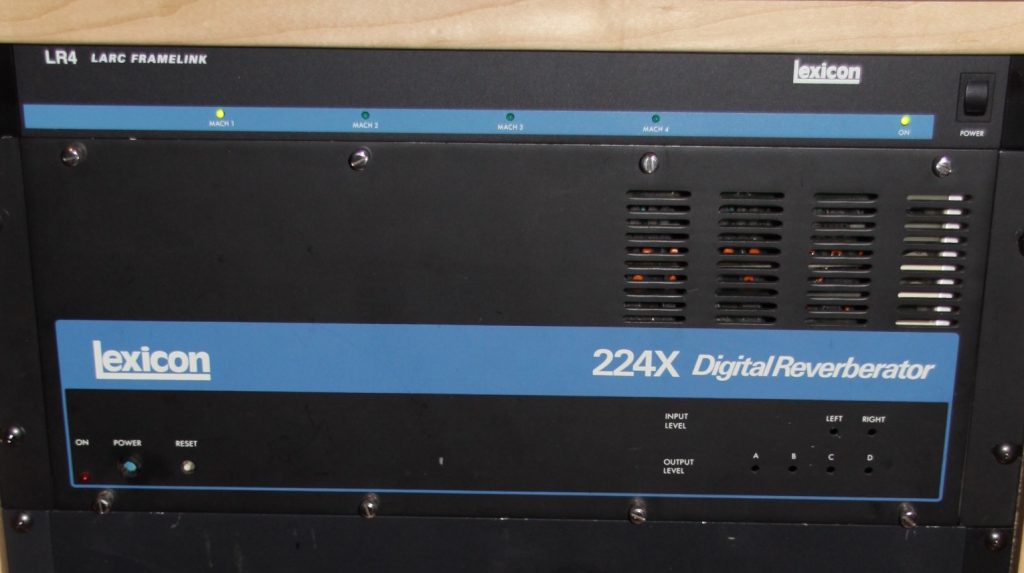
“I think many engineers like you and I have come to love in-the-box reverbs. There are some amazing reverb plugins out there that do great emulations of the vintage hardware units. So you could say, ‘why then do you need real outboard reverbs?’ I don’t know the answer to that other than to say, ‘because it’s fun and different,’ even though the emulations are so close these days. Sometimes, I’ll be working on a mix at home in my own studio and will be using plugin reverbs, like most of us do these days, and then come here to the studio and patch in one of the old Lexicon reverbs (top). I don’t do it to necessarily compare against the plugin version, but just to hear what it will do. And usually, it’s like ‘woah! That sounds completely different!’ Something about the sonic width it adds to the mix can often be very different than what you had ‘in-the-box.’ Things like that can surprise you, and I like those surprises.”

“Another example are delays. We have four Lexicon PCM 42 delays in a rack (right). Are you really going to go to the trouble of patching them into the console when you’ve got EchoBoy or whatever plugin on your mix already? Sometimes I do and the result can be surprising. Sometimes they sound way better than what I had with the plugin delays and other times the plugins win out. Point being, there’s no right or wrong way to any of this, but we’re in this great period of audio where we have the opportunity to explore and compare both. That, to me, is very exciting.”
The Conclusion
So why do I, as a sound designer for video games, care about music hardware? Well, most of the hardware I learned about at Studio Discrete has been modeled in some way or form as a software plugin. Even having spent a few hours going over different brands and flavors gave me the confidence I needed to start testing these tools to see how they can affect my sounds.
“Today, so much of the music we create can be done with nothing more than a laptop and some plugins. So why do we even need hardware anymore? Maybe we will come to a time where a lot of the analog outboard gear we have grown up with will not be as relevant anymore, but I really hope not! I, like many other full-time engineers doing what I do, am struggling to find a way to still make a living in a music business that has changed so dramatically, even over the last ten years. I do a lot of my work from a pretty modest set-up at home, because for a lot of the projects I work on, that is what the ‘budget allows.’ I’ll often do my tracking with a band here at Discrete, but then I’ll spend weeks at home editing and mixing in-the-box. Finally, I’ll bring it back here for last minute adjustments or to experiment with adding some of the outboard equipment we have at our disposal.”
“I’m sure this has been said by a million people in every era of technological advancements, but I really feel we are in a ‘Golden Age’ of audio right now where people still revere and pay lots of money for original vintage equipment because they feel nothing can touch it. That inspires and makes it possible for newer, high-end boutique companies to add ‘their spin’ and advancements on that gear, while also allowing for great new designs that weren’t possible with the components we had back then. And at the same time, we have software companies getting so close to emulating these classic pieces that it’s hard to tell the difference sometimes. Not to mention new sounds from software that were never dreamed of before. It is really an exciting time to be in audio and be able to respect the way records were made 40-50 years ago and to make them that way with the same equipment or modern day versions if you choose. But also, it’s great to be able to do something equally as good, but different (the keyword here being, different), completely inside a computer. For me, there’s no right or wrong way. There are so many valid ways to create music. I just hope I continue to have access to all of the palettes of sound available to us. Because… it’s a lot of fun!”
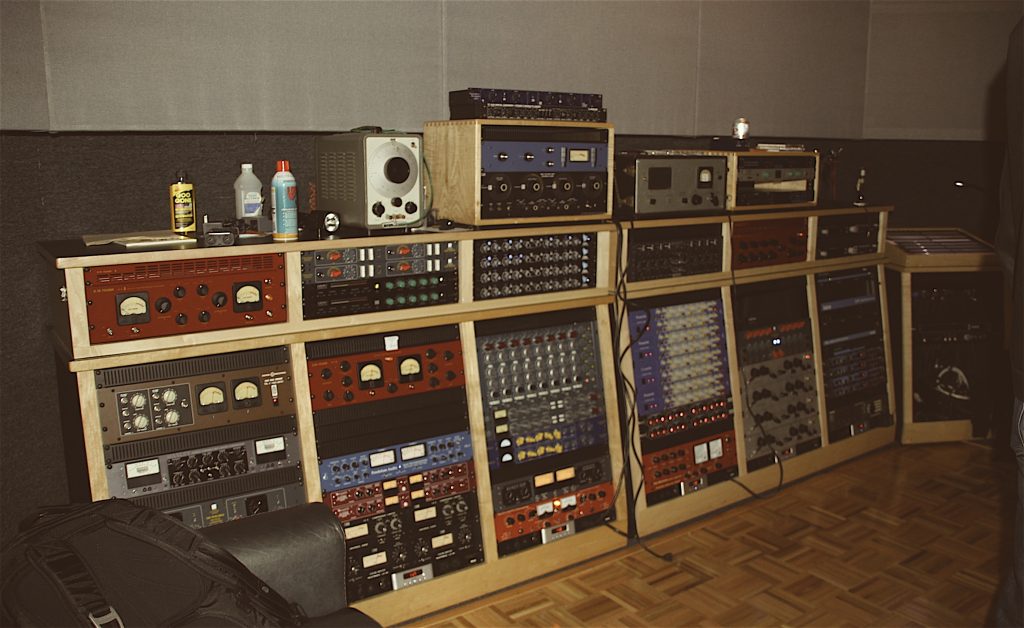
A big thank you to Sean and the rest of the engineers at Studio Discrete for giving me the opportunity to tour the studio! If you’d like to learn more about the studio, please visit their webpage at http://www.studiodiscrete.com/.
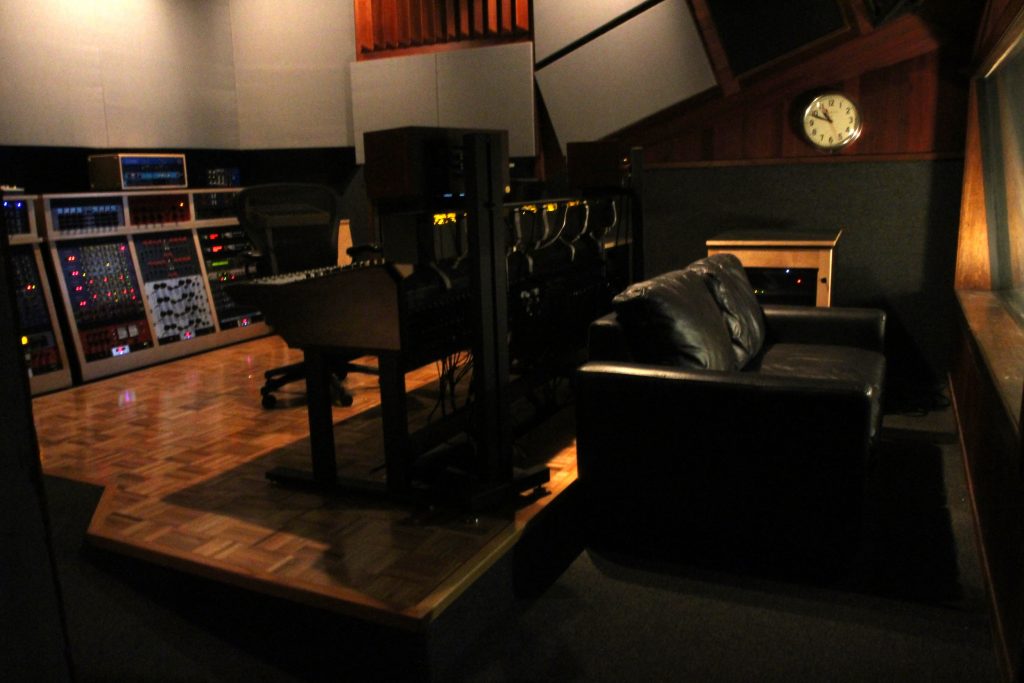

Great!
I really enjoyed the tour, thx.